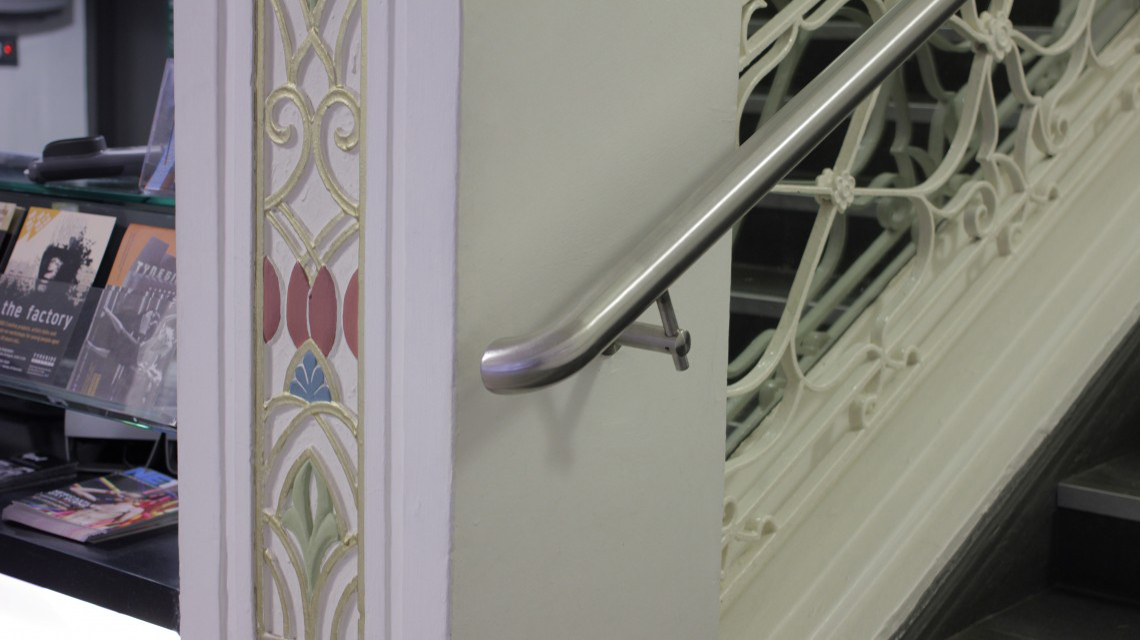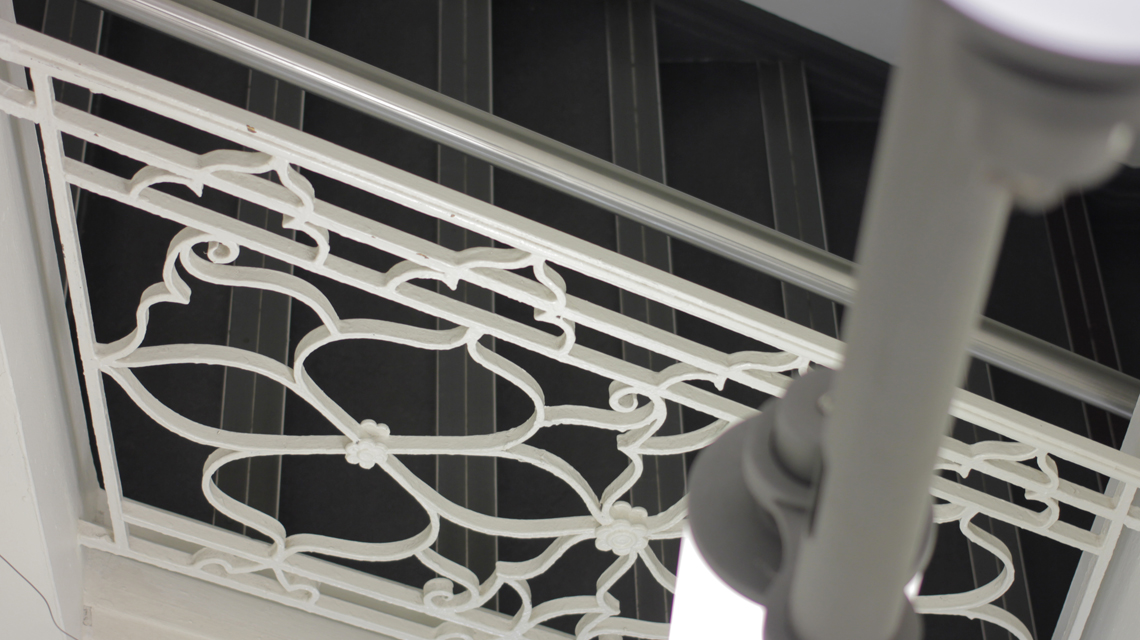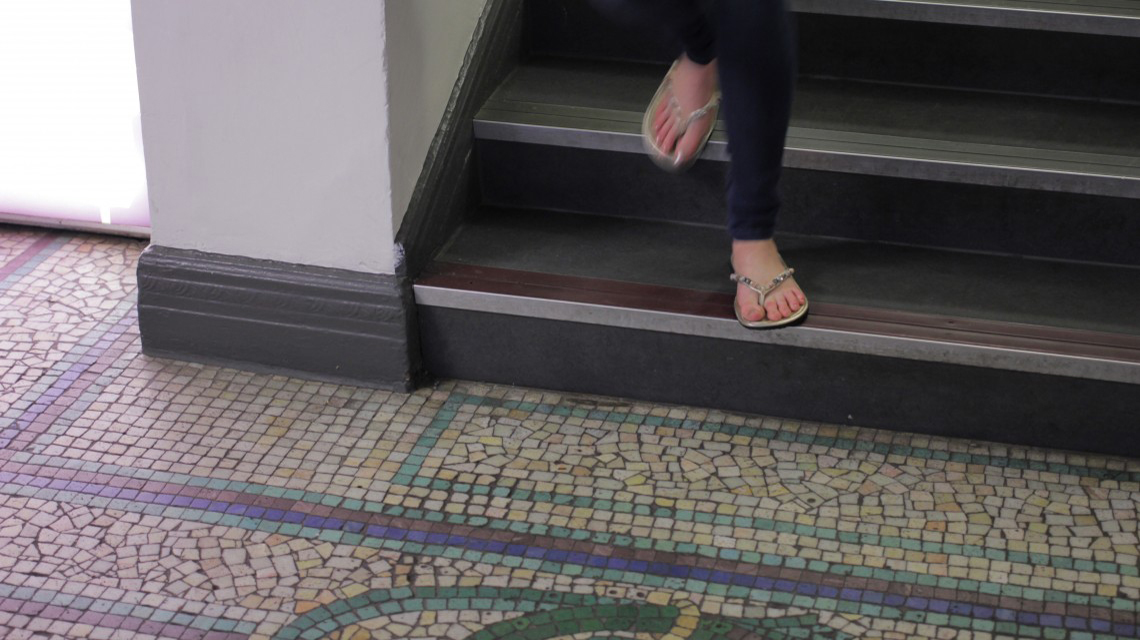


Upstairs
Commissioner / Pixel Palace / Newcastle upon Tyne, UK / 2011-12
Upstairs was an interactive sound installation that spread ghostly snippets of classic film dialogues in the staircase of a historical cinema building. As cinema visitors walked up and down the staircase, steps lighted up and triggered surprising and unexpected narratives. The installation ran for two and a half months, and ended with a live remix of the installation performed together by both the artists and the public.
Old Movies, Whispers and Footsteps
Pixel Palace Step Sequence: Upstairs from Tyneside Cinema.
Through their programme Step Sequence, Pixel Palace regularly commissions sound artists to produce work for the historical main staircase of Tyneside Cinema, in the centre of Newcastle upon Tyne.
Our approach to this commission was to link the historic space of the building to the history of the movies that have been shown in it, and to the physical movement of the hundreds of visitors who walk up and down the staircase of this cinema everyday.
We wished to creative a playful and poetic experience for visitors, which would not only remind them of the historical value of the building, but also allow them to play with it and bring the cinema’s memories to life in a new, unexpected way. The audio content came from three movies from the public domain, which was important for us in terms of engaging the public with its own culture heritage: ‘His Girl Friday’, ‘Freaks’ and ‘Plan 9 from Outer Space’.
Visitors were free to engage with the installation either passively, by simply using the staircase as usual, or actively by changing their movement patterns and jumping up and down certain steps in coordination with others.
The final performance, during which the sounds from the installation were remixed live – both by the artists using music technology devices, and by the audience walking through the staircase – worked as an active dialogue between the artists, the space, the audio content of the piece and visitors.
Design and Production Process
Our process ran over a period of two months of design and production, and two months of use by the public. The design and production period included a number of iterative stages such as research and development, design and prototyping and installation, while the public phase included maintenance and a public performance, followed by take-down.
In our experimental research and development stage, we used a combination of several interaction design techniques in order to determine the potential experience of the visitor. We studied the space, its use and the people who use it; engaged in brainstorming sessions; and used design sketches and scenarios techniques. We then designed for a variety of poetic configurations of interactions; developed bespoke software and hardware solutions specific to the space and design of the piece in order to prototype these designs; and implemented and tested them thoroughly before installing the technology in the space.
At the beginning of the project, we quickly decided for using content from classic public domain movies and aimed for the public to have a physical, bodily interaction with the piece, with a mix of passive and active participation. Moving up and down the space would create unexpected dialogues built from different movie lines, which would inhabit the space acoustically.
We chose to place sensors under certain steps of the staircase to trigger sound samples, and to use light cues in order to give a direct feedback to the visitors’ steps – in a reference to Michael Jackson’s ‘Billy Jean’ video by lighting up steps under their feet as the corresponding sounds were triggered.
An important design consideration was how to link sound content, interaction and architecture: We worked carefully on defining what the visitor’s experience would be when walking up, walking down, crossing path with others, and turning from passive to active participant. Spatialised speakers placed throughout the height of the staircase played back the sounds close to where visitor who triggered them was, wherever they were.
In terms of content, the sounds samples used in the installation were a careful selection of snippets of dialogues from three movies in the public domain that were witty, fun and could work together. We explored levels of determinism vs. randomness in the triggering of samples in the installation. This resulted in a decision that each step would trigger any random movie line of a database of close to one hundred samples. Therefore all samples had to potentially work together as parts of the same absurd dialogue.
Project Management
While we managed the allocated budget of the piece ourselves, the process above went alongside an on-going dialogue with the commissioners on how to make the piece packageable for touring, and the fixed technical infrastructure re-usable for other artists in the future. We also worked in close collaboration with cinema staff to manage around their opening hours, use of the space, availability of the staircase for construction work, and health and safety considerations. Builders were subcontracted to replace the linoneum of the staircase’s steps, so that we could embed the technology in such a way that it would be unobtrusive, invisible, easily re-useable in the future, and importantly, safe to step on.


